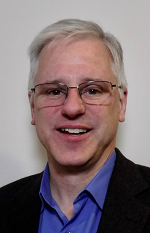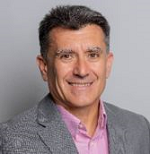ARP4761A Guidelines and Methods of Performing the Safety Assessment for Certification of Civil Aircraft C2302
Topics: Quality, Safety & Maintenance
This course introduces the revised SAE standard ARP4761A, and its application of the guidelines introduced in ARP4754B Guidelines for Development of Civil Aircraft and Systems. The instructors for this course are writers of the SAE standard, with practical expertise in this domain, and leading learners through the practices for performing aircraft and system-level safety assessments. This is a "how to do it" course detailing potential hazards, identifying their failure conditions, determining safety objectives, and then assessing system architectures against those objectives. Early development of safety requirements is a key, teaching expertise in system and aircraft safety objectives from the beginning. This course will include hands-on group activities and an exam.
Learners in this course will receive theARP4761A Guidelines and Methods of Performing the Safety Assessment for Certification of Civil Aircraft Standard.
Learning Objectives
- Identify failure conditions using an FHA
- Identify safety objectives from an FHA
- Evaluate proposed aircraft/system architectures against safety objectives
- Analyze common safety methods in the context of a safety process
- Use the safety assessment process to influence aircraft and system functions
- Represent safety interests during aircraft or system development
- Evaluate if an aircraft or system has met its safety objectives
- Apply the safety assessment process to a project
- Recognize when safety objectives are fully satisfied in a project
Who Should Attend
This course is designed for system engineers and other key personnel working on the civil aircraft/ system design and development, including but not limited to operational concept, requirements management, architecture design, system and item implementation, integration verification and validation, safety assessment, technical management, and program management.
The specific job roles that will benefit from this course include aviation, aircraft, and system engineers, system developers, system integration engineer, project manager, safety manager, risk manager, quality manager, safety staff, safety consultant, safety analyst, certification engineer, certification specialist, operations engineer, human factors engineer, participant, engineer, safety researcher, aerospace engineer, aerospace engineering and operations technologists and technicians.
Prerequisites
This course is the second in a two-part portfolio that supports standards two interrelated guidelines. Participants will want to either first complete the following course to support their competency with the guidelines and its tools or have a background in other structured system development assurance methods based on standards in other domains:
C2301 - ARP4754B: Guideline for the Development of Civil Aircraft and Systems
You must complete all course contact hours and successfully pass the learning assessment to obtain CEUs.
Steven Beland, Damien Glynn, or Johnson Wang
 Steve Beland has over 36 years of experience with the development of flight-critical complex systems. He has expertise in aircraft and system safety assessments, development assurance, and using these methods to shape successful system architectures to meet safety objectives. He recently retired as a Technical Fellow in Boeing’s new Enterprise Safety & Mission Assurance organization and beforehand was an Associate Technical Fellow in the Flight Controls organization of Boeing Commercial Airplanes leading safety assessments and influencing the architecture of the 777 and 787 fly-by-wire systems and the airplane-wide development assurance effort for the 787-8. He’s performed safety assessments for the flight controls on the 737, 747, 757, 767, 777, 777-X and 787 Dreamliner models and has been sought-out as a consultant on other projects in Boeing. He has been a delegate of the FAA or the ODA as a Designated Engineering Representative (DER) or Engineering-Unit Member for 30 years.
Steve Beland has over 36 years of experience with the development of flight-critical complex systems. He has expertise in aircraft and system safety assessments, development assurance, and using these methods to shape successful system architectures to meet safety objectives. He recently retired as a Technical Fellow in Boeing’s new Enterprise Safety & Mission Assurance organization and beforehand was an Associate Technical Fellow in the Flight Controls organization of Boeing Commercial Airplanes leading safety assessments and influencing the architecture of the 777 and 787 fly-by-wire systems and the airplane-wide development assurance effort for the 787-8. He’s performed safety assessments for the flight controls on the 737, 747, 757, 767, 777, 777-X and 787 Dreamliner models and has been sought-out as a consultant on other projects in Boeing. He has been a delegate of the FAA or the ODA as a Designated Engineering Representative (DER) or Engineering-Unit Member for 30 years.
Steve has made significant contributions to the related industry development assurance and safety guidelines, including RTCA DO-254, “Design Assurance Guidance for Airborne Electronic Hardware,” and has been a long-time member of the SAE S-18 Committee writing ARP4754A & B and ARP4761. He co-led the concept and writing of guidelines for the assignment of Development Assurance Levels (DALs) in ARP4754A/B and the new Preliminary Aircraft Safety Assessment (PASA) and Aircraft Safety Assessment (ASA) concepts and guidelines and their interactions with other processes for the new ARP4761A. He has served as a co-chair of SAE S-18UAS assessing the application of these ARPs to UAVs & Advanced Air Mobility (AAM) systems and as a co-chair of the systems and safety assessment subgroup in SAE G-34, “Artificial Intelligence for Aviation.”
Steve has a BS in Electrical Engineering from Michigan Tech, an MS in Systems Engineering from the University of Missouri – Rolla, and a Graduate Certificate in Architecture & Systems Engineering Modelling from MIT.
 Damien Glynn has 26 years of experience in the development, integration, and certification of avionics systems. His career began in the area of reliability engineering, growing into all aspects of system safety. Throughout his career at Collins Aerospace, Damien has worked on a wide range of systems from communication, navigation, to traffic surveillance and weather radar products. He supported the integration of these systems onto many aircraft platforms, both civilian and military.
Damien Glynn has 26 years of experience in the development, integration, and certification of avionics systems. His career began in the area of reliability engineering, growing into all aspects of system safety. Throughout his career at Collins Aerospace, Damien has worked on a wide range of systems from communication, navigation, to traffic surveillance and weather radar products. He supported the integration of these systems onto many aircraft platforms, both civilian and military.
Damien has been directly involved in the SAE S-18 Committee, specifically in a co-sponsor role, in the writing of ARP4761A.
Damien has a B.E. in Mechanical Engineering from University College Dublin, and a M.S. in Systems Engineering from the University of Florida. He is a Certified Reliability Engineer (CRE) and holds a FAA Private Pilot License.
 Dr. Johnson Wang has over 20 years of experience in avionics system development, including IMA and CNS systems and LRUs. He worked as technical program manager on the CNS system for both C919 and AG600 aircraft and got his “outstanding contributor” awards from Rockwell Collins and CETCA. Currently, he serves as the Chief Engineering & Ecosystem department leader of AVIAGE SYSTEMS in charge of Safety & RMT, airworthiness certification, system engineering and process assurance, as well as the tool chain and integration labs for IMA and other complex avionics systems.
Dr. Johnson Wang has over 20 years of experience in avionics system development, including IMA and CNS systems and LRUs. He worked as technical program manager on the CNS system for both C919 and AG600 aircraft and got his “outstanding contributor” awards from Rockwell Collins and CETCA. Currently, he serves as the Chief Engineering & Ecosystem department leader of AVIAGE SYSTEMS in charge of Safety & RMT, airworthiness certification, system engineering and process assurance, as well as the tool chain and integration labs for IMA and other complex avionics systems.
He has a B.E. in E.E. and an M.S. in space physics, both from Wuhan University, and Ph.D. in computer science from UESTC. He’s an authorized DER by CAAC, and a member of SAE S-18 committee and ARINC 653 workgroup, Technology Advisor to Youth Innovation for COMAC Big Aircraft, and an invited teacher in Shanghai Jiaotong University. He is a frequent guest and speaker at high-level international conferences in the field of avionics, such as DASC, ICNS, SAE AeroTech, and has chaired several avionics and airworthiness conference/forums in China. He has published over 20 papers in academic journals and high-level international conferences.
